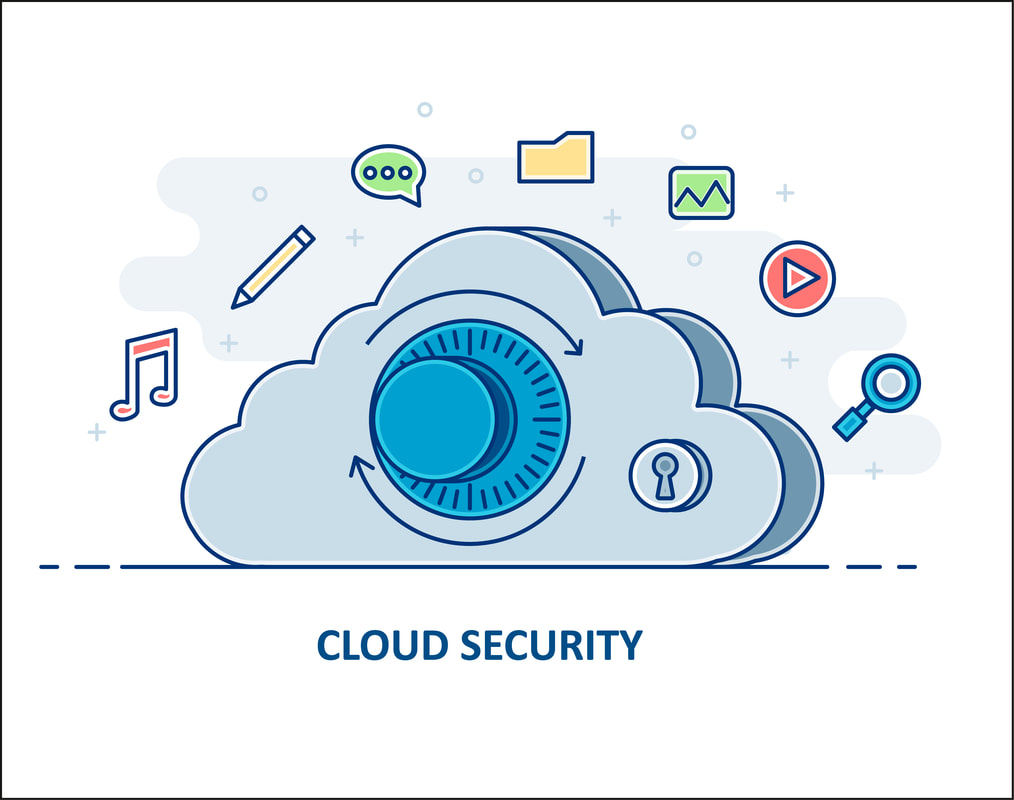In today's digital landscape, where cyber threats are constantly evolving and becoming more sophisticated, ensuring the security of your business's sensitive data and information is paramount. Cybersecurity compliance goes beyond a mere checkbox; it's about implementing a holistic approach to safeguard your organization against potential cyberattacks and data breaches. In this blog post, we'll delve into the significance of cybersecurity compliance and guide you through the steps to assess if your business is truly cybersecurity compliant.
The Importance of Cybersecurity Compliance
Cybersecurity compliance refers to adhering to a set of regulations, standards, and best practices designed to protect digital assets, customer data, and sensitive information. Failing to maintain compliance can lead to severe consequences, including legal penalties, reputational damage, and financial losses. By being compliant, your business demonstrates a commitment to safeguarding data, which can enhance customer trust and overall business reputation.
Assessing Your Cybersecurity Compliance
Regulatory Frameworks and Standards: Start by identifying the relevant regulatory frameworks and industry standards applicable to your business. Depending on your industry and location, frameworks like GDPR, HIPAA, ISO 27001, NIST, and others might apply. Familiarize yourself with their requirements and tailor your cybersecurity practices accordingly.
Data Inventory and Classification: Understand what data your business collects, processes, and stores. Classify this data based on its sensitivity and potential impact. This classification will help you determine the level of security controls needed for each type of data.
Risk Assessment: Conduct a thorough risk assessment to identify potential vulnerabilities and threats. This involves evaluating your technology infrastructure, software, network, and even your employees' practices. Assess the potential impact and likelihood of different threats to prioritize mitigation efforts.
Security Policies and Procedures: Develop and implement comprehensive security policies and procedures that align with your regulatory obligations. These policies should cover areas such as data access control, encryption, incident response, and employee training.
Access Control: Limit access to sensitive data to authorized personnel only. Implement strong authentication mechanisms like multi-factor authentication (MFA) to prevent unauthorized access.
Regular Training and Awareness: Train your employees on cybersecurity best practices and the importance of compliance. Employees should be aware of phishing attacks, social engineering tactics, and the proper handling of sensitive data.
Incident Response Plan: Develop a robust incident response plan outlining steps to take in case of a cyber incident. This plan should include communication strategies, containment measures, and post-incident analysis.
Continuous Monitoring and Testing: Regularly monitor your systems for any anomalies or suspicious activities. Conduct penetration testing and vulnerability assessments to identify and address potential weaknesses.
Vendor Management: If your business relies on third-party vendors for services, ensure they also adhere to cybersecurity best practices. Their vulnerabilities could become your vulnerabilities.
Documentation and Auditing: Maintain thorough documentation of your cybersecurity processes, policies, and activities. Regularly review and audit your compliance efforts to identify areas for improvement.
Cybersecurity compliance isn't a one-time task; it's an ongoing commitment to protecting your business and its stakeholders from evolving cyber threats. By following the steps outlined in this guide, you can assess whether your business is truly cybersecurity compliant. Remember that cybersecurity is a shared responsibility that involves everyone in your organization. Stay proactive, adapt to new threats, and continuously improve your cybersecurity posture to ensure the long-term security and success of your business. If you need help getting your business compliant, speak to the team at Blue Mountains Computers today.
The Importance of Cybersecurity Compliance
Cybersecurity compliance refers to adhering to a set of regulations, standards, and best practices designed to protect digital assets, customer data, and sensitive information. Failing to maintain compliance can lead to severe consequences, including legal penalties, reputational damage, and financial losses. By being compliant, your business demonstrates a commitment to safeguarding data, which can enhance customer trust and overall business reputation.
Assessing Your Cybersecurity Compliance
Regulatory Frameworks and Standards: Start by identifying the relevant regulatory frameworks and industry standards applicable to your business. Depending on your industry and location, frameworks like GDPR, HIPAA, ISO 27001, NIST, and others might apply. Familiarize yourself with their requirements and tailor your cybersecurity practices accordingly.
Data Inventory and Classification: Understand what data your business collects, processes, and stores. Classify this data based on its sensitivity and potential impact. This classification will help you determine the level of security controls needed for each type of data.
Risk Assessment: Conduct a thorough risk assessment to identify potential vulnerabilities and threats. This involves evaluating your technology infrastructure, software, network, and even your employees' practices. Assess the potential impact and likelihood of different threats to prioritize mitigation efforts.
Security Policies and Procedures: Develop and implement comprehensive security policies and procedures that align with your regulatory obligations. These policies should cover areas such as data access control, encryption, incident response, and employee training.
Access Control: Limit access to sensitive data to authorized personnel only. Implement strong authentication mechanisms like multi-factor authentication (MFA) to prevent unauthorized access.
Regular Training and Awareness: Train your employees on cybersecurity best practices and the importance of compliance. Employees should be aware of phishing attacks, social engineering tactics, and the proper handling of sensitive data.
Incident Response Plan: Develop a robust incident response plan outlining steps to take in case of a cyber incident. This plan should include communication strategies, containment measures, and post-incident analysis.
Continuous Monitoring and Testing: Regularly monitor your systems for any anomalies or suspicious activities. Conduct penetration testing and vulnerability assessments to identify and address potential weaknesses.
Vendor Management: If your business relies on third-party vendors for services, ensure they also adhere to cybersecurity best practices. Their vulnerabilities could become your vulnerabilities.
Documentation and Auditing: Maintain thorough documentation of your cybersecurity processes, policies, and activities. Regularly review and audit your compliance efforts to identify areas for improvement.
Cybersecurity compliance isn't a one-time task; it's an ongoing commitment to protecting your business and its stakeholders from evolving cyber threats. By following the steps outlined in this guide, you can assess whether your business is truly cybersecurity compliant. Remember that cybersecurity is a shared responsibility that involves everyone in your organization. Stay proactive, adapt to new threats, and continuously improve your cybersecurity posture to ensure the long-term security and success of your business. If you need help getting your business compliant, speak to the team at Blue Mountains Computers today.







 RSS Feed
RSS Feed
